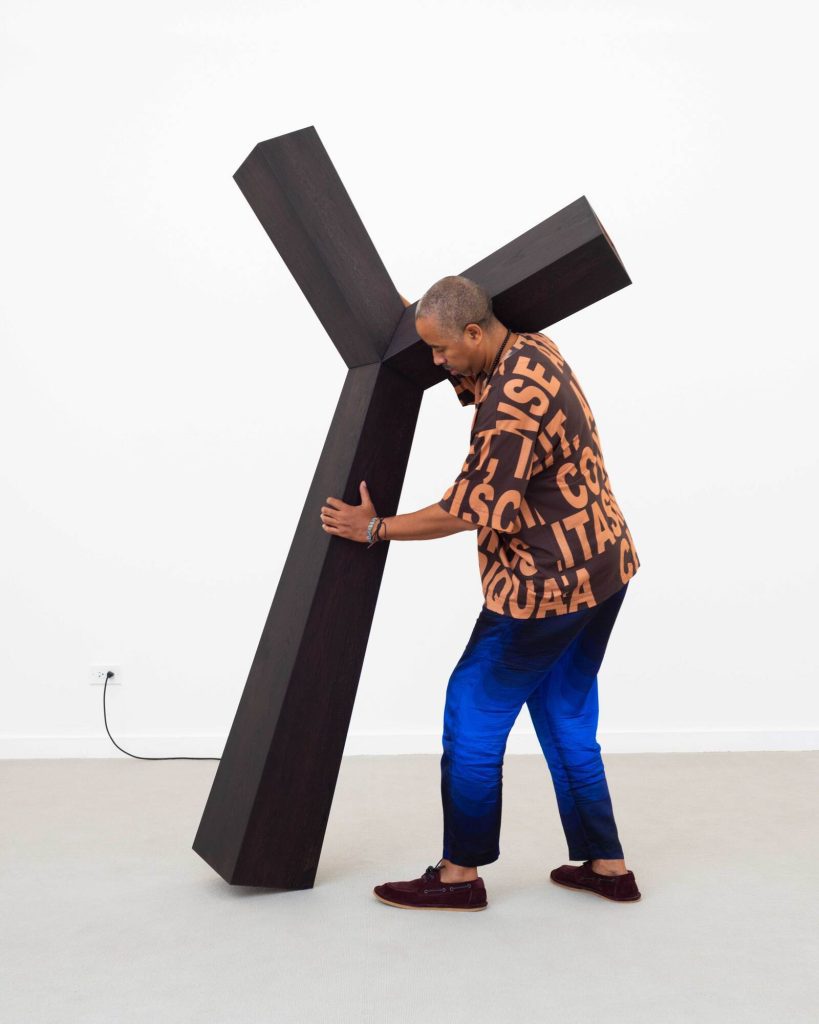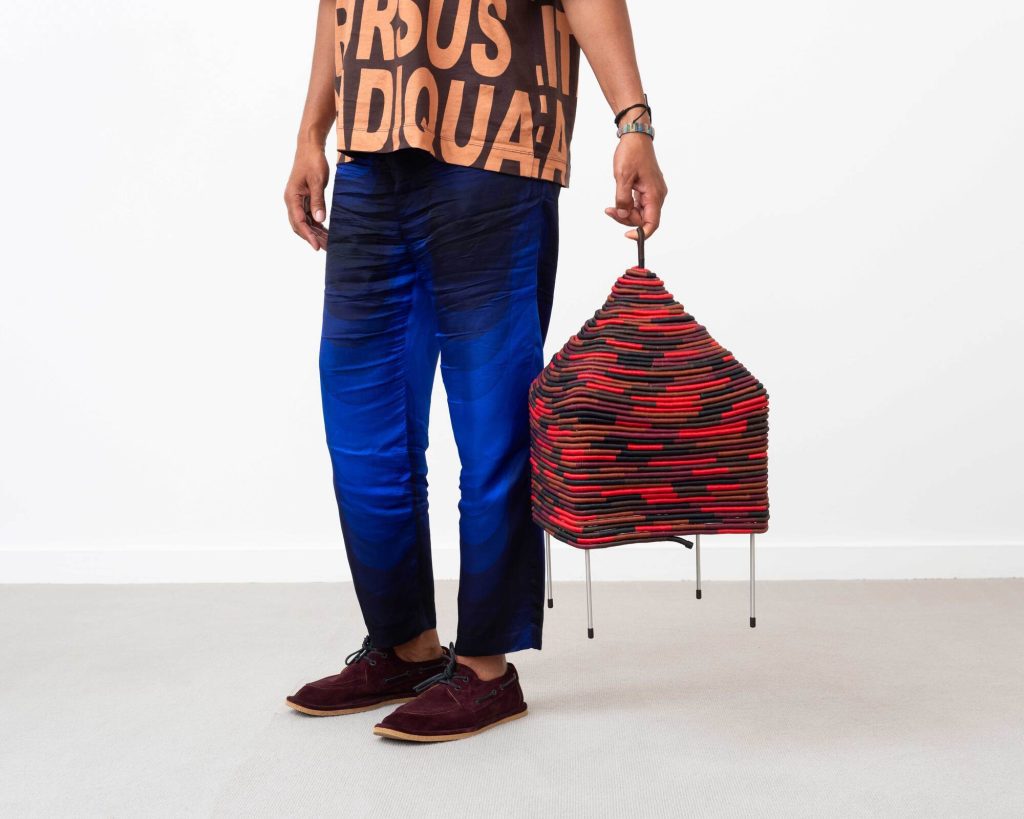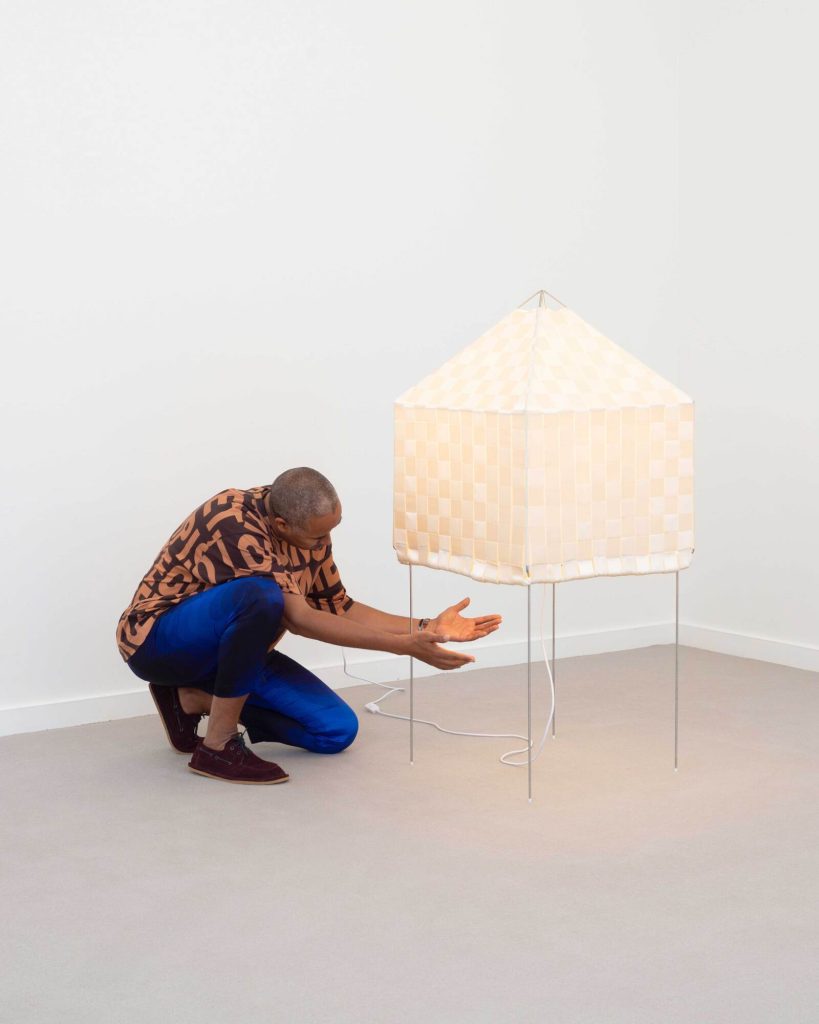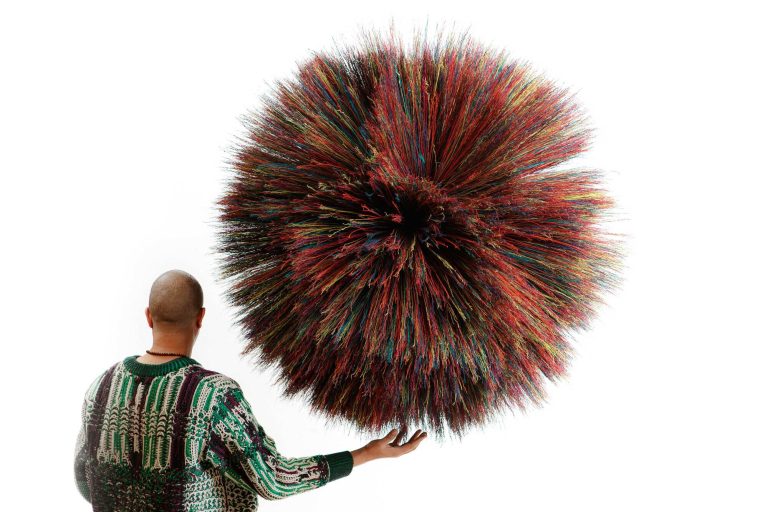
Spirit Houses Ypsilon Stephen, 2023

Spirit Houses Cozy Portrait, 2023

Spirit Houses Lantern Stephen, 2023
How can design keep the soul of craft alive in a fast-paced, industrial world? Stephen Burks, known for bridging handcraft with contemporary design, is driven by a vision of inclusive, culturally rich design that respects tradition while embracing change. Here, Burks shares how he navigates this delicate balance, drawing from collaborations across continents to create pieces that tell stories of resilience, artistry, and unity.
hube: Your work brilliantly bridges traditional craft with the possibilities of modern industrial production. How do you manage to stay true to the authenticity of handmade practices while scaling up for a global market? Do you ever find yourself having to make compromises?
Stephen Burks: I’ve always approached design as a tool for transformation – artistically, politically, socially, even ecologically. I’m less interested in style or the pursuit of the perfect form. What excites me is the potential for innovation that design offers at the material scale, the product scale, and the community scale. I believe the closer the hand gets to the act of making the more room there is for innovation. Contemporary design, like all cultural production – film, fashion, literature – is much greater than the sum of its parts. The best way I’ve found to maintain authenticity is to give equal value to each individual part.
h: The Shelter in Place series is such a timely reflection on how our homes have become central to our lives. How did your personal experience during the pandemic influence the creation of these pieces, and what do you hope they communicate to those who live with them?
SB: When we received the official order to Shelter in Place, my partner Malika and I had just moved into a Brooklyn loft with my 14-year-old son. We were all living together and getting to know one another in this awkward, uncertain, transgenerational moment. Two months into the pandemic, my son lost both of his maternal grandparents. Without the ability to grieve collectively, we wondered: What more can design do? How could we move beyond a typical commercial design brief and address greater social concerns such as the need to consider spirituality in the contemporary home? This led to a prototype called Spirit House, derived from the daily practice in Southeast Asia of publicly honouring the deceased with offerings on the altar of a symbolic miniature house.
Another prototype was Private Seat, a micro-architectural screen that offered a moment of respite and privacy from our domestic partners. Or Ancestors, which was our attempt to give form to the struggle for racial equity. Eventually, these radical domestic explorations led to a museum commission and travelling solo exhibition at the High Museum of Art in Atlanta, which opened us up to a more speculative and conceptual approach to design.
h: You’ve always been a vocal advocate for inclusive design that honours diverse cultural perspectives. In your collaborations with artisans across the world, how do you ensure that the relationship is truly mutual, rather than just a one-sided exchange?
SB: Everyone is capable of design. We all dream. We all communicate. We all give form to our built environment regardless of our level of education or cultural background. Since the George Floyd Protests, the worlds of contemporary design, art, and fashion are finally making a more sincere effort to address the Eurocentric origins of each of these fields. But there are two important distinctions we try to make in our work; we lead with empathy, not sympathy; and we believe in trade, not aid. If design is a box left closed and an attempt at the insurance of industrial production by defining the object down to the micron, then art is a box left open to the imagination. Although we work through design mediums, our goal is always a more imaginative response, less about insurance and more about possibilities.

